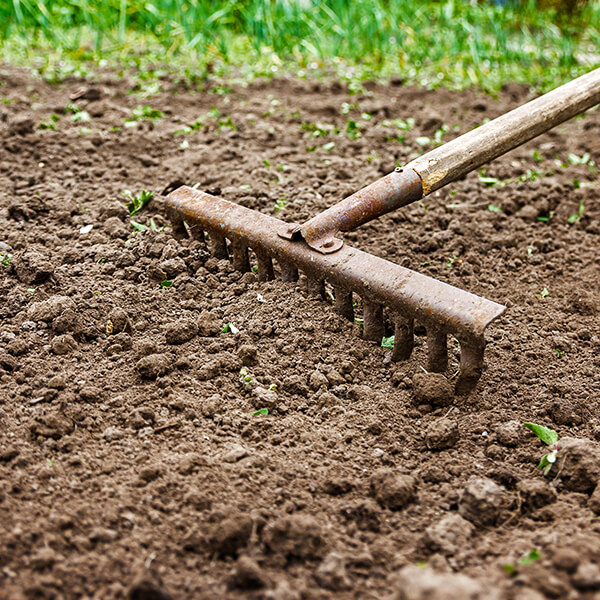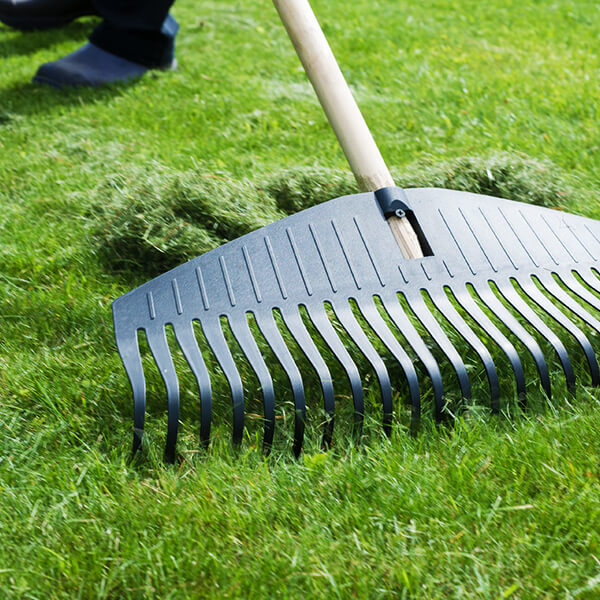
Seeding to Establish a Healthy & Full Lawn
Posted by Grange Co-op on 30th Aug 2018
Sometimes lawns become so overtaken with weeds the most efficient and productive method to recover is to re-seed. If you have assessed your lawn and settled on this decision, establishing a new lawn can be a process that can seem overwhelming. However, seeding to establish a healthy lawn is common and simple with the correct tools. This GrangeKnows article will provide you the step-by-step procedure to help you successfully establish a healthy lawn.
Seeding to Create a Healthy Lawn
Clear the old growth in the lawn to get a good look at the composition of the soil. You'll need to examine the top 10 to 12 inches. Determine whether or not water will be able to penetrate the soil easily. If the soil is extremely tight and dense, add a light textured topsoil or humus to a depth of at least six inches into the existing soil. Next, establish the desired grade by filling low spots and leveling out any high spots. At this point, you can add a starter fertilizer and organic matter to amend the topsoil. This will help ensure your seeds get off to a great start. New grass needs essential nutrients, such as phosphorus to support root growth, and nitrogen to encourage top and growth and greening. Generally, starter fertilizers have higher numbers on the first two digits of the product's N-P-K ratio. Meaning it has a higher nitrogen (N) and phosphorus (P) count but a lower number of potassium (K).

After the topsoil has been added and fertilizer has amended within the top 6-8 inches, your soil is nearly ready for seeding. Rake and level to the finished grade desired. A float may be used to level the ground, break up any dirt clods and firm the seed bed. A float can be made by lapping five 2" X 12" boards and nailing them together. Pull with the rough side down for leveling and the smooth side down for smoothing and compacting. Use a roller to compact the soil into a firm seed bed. You should not be able to leave foot prints deeper than one-half inch as you walk on the seed bed.
Rake a shallow loose surface. Divide the seed into two equal parts. Using a hand held spreader go over the entire area with each amount, walking a different direction each time. This will assure better distribution of seed. A good rule of thumb is one pound of lawn seed will adequately cover around 200 to 400 sq. ft. of area. Next, rake lightly and roll. You may want to add a light covering of peat moss or other redwood soil conditioner to help keep the seed moist. Mulching will also help to prevent crusting on top.
Water lightly and often to get the grass started, but not enough to cause puddles. Reduce frequency of watering as grass begins to gain height but continue to water so that the soil is moist 6 to 12 inches deep. Gradually transition to watering less frequently but more heavily. It's a good practice to apply a fungicide as soon as the grass is up. This will prevent trouble later, especially in fine fescue seeding. We carry a selection of both organic and conventional fungicides. Begin fertilizing four to eight weeks after seed germination.
During the first season of establishment, avoid as much foot traffic as possible and always follow the recommended mowing heights on the label for your type of grass. Never remove more than one-third of the grass blade during a single mowing. Doing this can stress the grass and furthermore increase chances of lawn disease, weeds, and weak growth. Often, especially during fall planting, your first mowing may need to wait until the following spring.
Remember, weeds in a new lawn are common. Seeds--which have accumulated in the soil--sprout because they now have an even more ideal environment to grow in. Many of these weeds will be controlled by normal mowing and competition from the lawn grass. If weeds persist after mowing at least five times, use a quality weed control product. Remember, avoid using weed & feed shortly after seeding your lawn, such a product will inhibit the sprouting grass from growing.
Overseeding your Lawn
Over time, grass needs replacing. Lawns become worn-out and older, inviting weeds in their place. Other times lawns are recovering from weeds or drought and begin looking weak or thin. Overseeding and fertilizing your lawn can thicken these visible patchy areas. Overseeding is best done in the fall, when the air is cooler, but the soil remains warmer from the hot summer sun.
To begin establishing a healthy lawn, cut the grass shorter than normal and bag the clippings. We also recommend raking the top layer of the lawn to loosen the soil and remove additional dead grass and debris. Doing this will
 allow the seed easier access into the soil, allowing it to germinate more easily.
allow the seed easier access into the soil, allowing it to germinate more easily.
Remember, not all grass seed is the same. Choose a grass type as close as possible to the existing growth. Snap a close up picture of your grass and show one of our Grange Gardening Experts if you're unsure which type of seed to purchase. You can purchase fertilizer+seed mixes, but if you've chosen to use only grass seed, it is wise to amend soil as this will add a boost to the overseeding. Our most popular fertilizer, Rogue 23-3-13 All Season Lawn is ideal for this and available in both 20 lb and 40 lb bags.
Once you've completed these steps, fill your spreader with the seed, adjust the settings according to label instructions, and apply! Once the seed is laid, water regularly. It is important to keep the soil consistently moist (often this is once or twice a day) until it has grown the height of the existing lawn.
These steps are meant to simplify and assist with seeding to establish a healthy lawn. For additional tips and advice please visit your local Grange Co-op to speak with one of our Grange Gardening Experts, we'd be happy to help.
Summary:
- Determine desired soil and grade.
- Apply organic matter
- Till to a depth of 6 - 8 inches.
- Level
- Compact
- Apply fertilizer
- Rake shallow loose surface
- Apply seed
- Rake lightly
- Roll
- Keep seed bed moist
Grange Co-op offers the following items to rent:
- Lawn Roller
- Peat Moss Spreader
- Spreaders
- Landscape Rake
